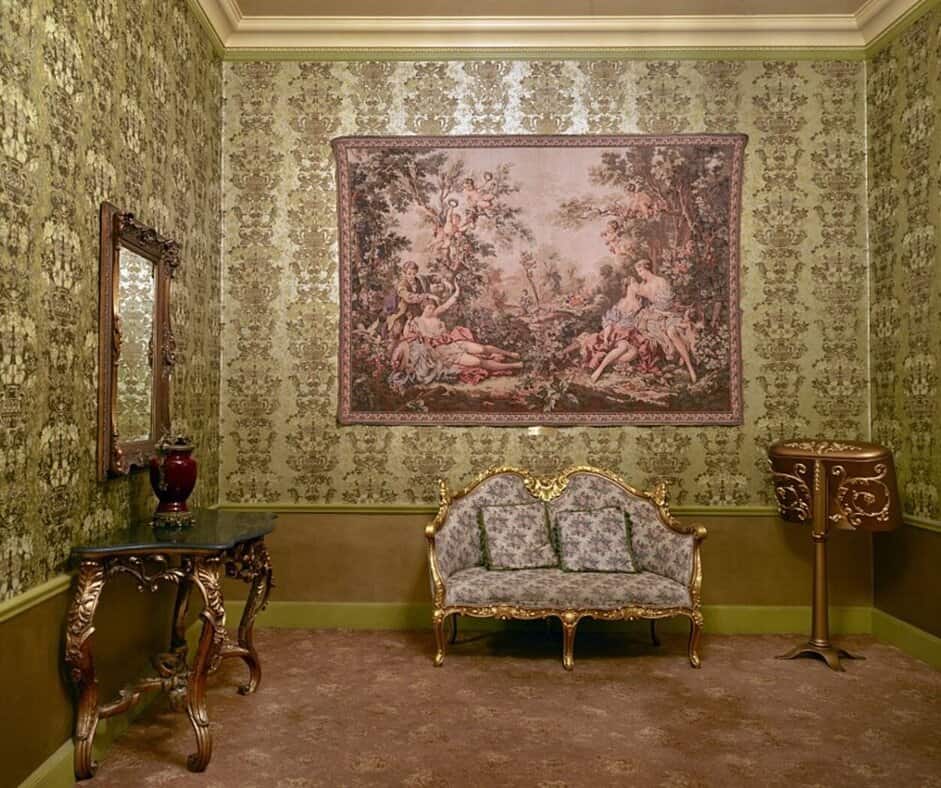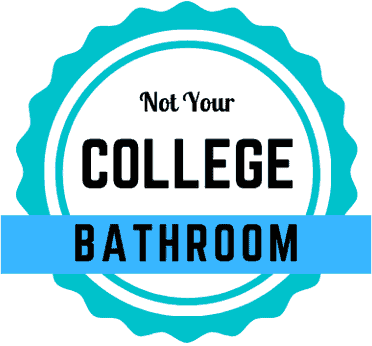Sometimes local slang is a bit odd, or at least comes that way once you stop to think about it. In the United States the words “bathroom” and “restroom” are used as interchangeable synonyms. They both mean the same thing, but that seems a bit odd, doesn’t it? Who would want to spend time in a bathroom, especially a public one? Not exactly my idea of relaxing and restful.
The funny thing is, I first thought about this in high school because of a field trip…and it turns out a weird experience and “logical” thinking off of that actually ended up giving the right answer!
The short of it is this:
In the early 1900s upscale theaters, play houses, restaurants, or other fancier establishments would have a sort of “lounge” in a room connected to the actual toilets. The room would have couches, chairs, and smoking was allowed, making the room by the toilets the actual “rest room” in between shows or while waiting on others.
During a high school trip to an old theater, the old building had these were the public bathrooms led to…a large room with old style carpet and multiple couches, and a very small open door frame in the far left that led to the actual sinks and toilet stalls. This strangeness caught our attention, because it really was a lounge leading to the actual bathroom.
At that point I wondered if that was why they were called restrooms – because maybe at once point it was common to have a lounge attached to the actual toilet stalls. Turns out, that musing was 100% historically correct.

Restrooms Used to Be Smoking Lounges and/or Hangouts
The construction works so that walking through a door led to the lounge area with couches, plants, chairs, and three full walls. The fourth wall would be the one that led to the actual toilet area, with most of the side being actual wall, but the far side having an opening (which may or may not have a swinging door to further cut-off smells and sounds from the toilet area.
These rooms were originally more common for women, and then actually spread to become common for public mens’ restrooms, as well. This is where the name restroom actually comes from because that room attached to the toilets was referred to by multiple names including “rest room” because (and don’t kill the messenger here, the sexist reasoning to this is over 150 years old) the thought was women were the weaker/fairer sex and therefore might need a place to rest. Therefore, the attached rest room with couches to lay down upon.
The women’s side rooms would often include mirrors to take care of makeup and other similar practices seen as more of a “feminine thing,” and also played off the social idea that middle and upper class women out in public would need a safe private space to “protect their virtue.” These spaces are what were originally referred to as restrooms.
This is why bathroom are called restrooms, because of that weird combination of historical design and sexist thinking. Bloomberg actually has a really good article on the top that you can read by following the link under the above picture.
Spread to Men’s Restrooms
It took longer for the same thing to spread to public men’s restrooms, however for men these rooms were seen as a place to socialize and were sometimes referred to in the beginning as “retirement rooms” where men would retire to socialize whether during an intermission or during the slow movement out of a show.
An extended intermission used to be quite common for movies, plays, or other public shows which meant a 15 to 30 minute time where those attending would stretch their legs, have a smoke, grab some fresh air, or socialize with other individuals of the same sex. This social room was popular enough to become a feature of many of these buildings and so these rooms for breaks or rests just became the restrooms.
Then eventually the term just applied to the entire thing and not just the initial lounge-like room before heading to the room with the actual stalls and private toilets. Because of that even when the lounges started fading and a public bathroom become not just the sign of a “upper middle class” establishment but standard fare for public buildings, and then mandatory for public buildings, the lounge went away but the name stayed.
Finding an initial rest room or lounge room before the toilet stalls nowadays in the United States means you are likely at a theater that has been in operation for well over 100 years without a heavy duty remodel. Which means you probably caught a great show and had that oddity of an experience of seeing a very old school couch and carpet before walking further back to the actual toilets.
So to answer some common questions:
Why are bathrooms called restrooms?
Because previously public restrooms actually had resting areas combined with the actual toilets creating a lounge/rest room prior to the actual toilets and sinks. Once the lounges left the name just stuck and they became synonymous.
Is restroom and bathroom the same?
It didn’t used to be, but in modern times in the United States, yes, a restroom and a bathroom is now the same thing.
If this referred to public restrooms why is that still a synonym for at-home bathrooms?
Probably one part laziness, one part the fact that the difference between public restrooms and home bathrooms are much more similar than they used to be. That said, now that I think about it, I much more often say bathroom at my house or a guest’s house, and use restroom in a public place so some semblance of that difference actually still seems to exist, even if unconsciously.
Why Do Brits Call a Restroom a Loo?
Another term that often has stories attacked to it with an odd or interesting history, unfortunately the answer to this one isn’t nearly as clear cut as the story behind why restroom became a synonym for bathroom.
The three most common stories about why restrooms are called loo by the British are:
- Comes from the cry of “Gardyloo!” which meant watch out for the water and came from the French regardez l’eau and came from the time of emptying chamber pots out the windows.
- Comes from the French expression of le lieu meaning “The place” which was a euphemism for using the bathroom
- Having something to do with the term Waterloo, written on many of the cisterns found in outhouses in the late 19th century and early 20th century
Unfortunately, it appears that all three of these are almost certainly urban myths. While it’s hard to say if there might be a modicum of truth somewhere with any one of them, even the stories that “fit” appear decades after the fact, feeding the likely theory that the stories were made up off of sounding like a good pub tale that was plausible and made sense as opposed to being based off of anything that actually happened.
In Conclusion
While there’s not a lot of resting going on in modern restrooms, sometimes when going into a particularly old theater or old fashioned building in running for a century and a half or more, you can still catch sight of these interesting little restrooms in front of the bathroom, and it’s something that definitely makes you think about the differences between then and now.
But now you know why restroom became a synonym for bathroom, and the entire history of how that transition came to happen. Modern restrooms might not have the same style as they once did, but the old tradition of that name still remains. It’s a remnant, a figment, of history passed, but at least now if the question of “Why are bathrooms called restrooms?” comes up, you actually know the answer, and the supporting history behind it.
Other Bathroom Articles of Interest
